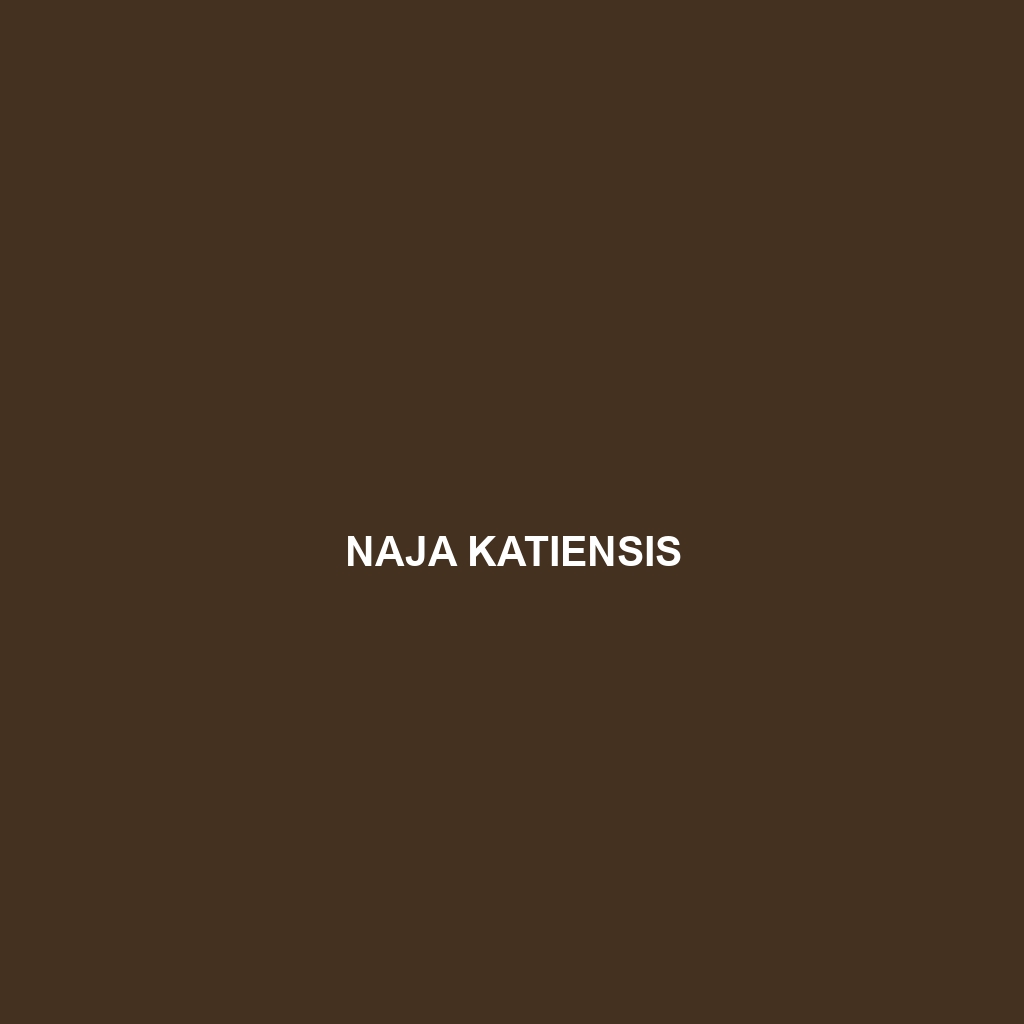Common Name
Naja katiensis
Scientific Name
Naja katiensis
Habitat
The Naja katiensis, commonly known as the African spitting cobra, is primarily found in West Africa, particularly in regions such as Senegal, Gambia, Guinea-Bissau, Guinea, Sierra Leone, Liberia, and Ivory Coast. This species thrives in a variety of habitats, including coastal savannas and rainforests, but can also be found in semi-arid areas where it utilizes the unique geographical features of these regions for survival. The warm, humid climate of rainforests, combined with the dry heat of savannas, provides a suitable environment for the behavior and life cycle of Naja katiensis. Additionally, it often inhabits areas near agricultural fields, which serve as a food source due to the abundance of rodents and other small mammals.
Physical Characteristics
Naja katiensis displays distinct physical features that differentiate it from other cobra species. This snake reaches a total length of approximately 1 to 1.5 meters (3 to 5 feet). Its body is slender with smooth scales, often exhibiting a coloration that ranges from light brown to olive green, adorned with darker bands or spots. The hood, a characteristic feature of cobras, is well-developed and becomes prominent when the snake feels threatened, displaying a distinctive “hood pattern.” Its eyes, which are relatively large and positioned high on the head, provide excellent vision, which is crucial for both hunting and avoiding predators. The potency of its venom is another notable characteristic, making it one of the more dangerous species of cobras.
Behavior
The behavior of Naja katiensis can vary widely, showcasing unique and intriguing aspects of its lifestyle. These snakes are typically diurnal, being most active during the day, although they may exhibit nocturnal behavior in regions with higher temperatures. They are solitary creatures, coming together primarily for mating purposes. During the reproductive season, males engage in elaborate courtship displays, which include ritualistic movements and hissing sounds to attract females. The spitting behavior is another notable aspect, allowing this cobra to eject venom at potential threats, striking at distances of several meters, which serves as a defense mechanism.
Diet
Naja katiensis is primarily a carnivore, with a diet that mainly consists of small mammals, birds, and amphibians. Its exceptional flexibility allows it to consume prey that is larger than its head. The hunting method usually involves a blend of ambush tactics and active foraging. These cobras use their keen sense of smell and sight to detect prey, often relying on their striking speed to capture it. This species plays a crucial role in controlling local rodent populations, thus maintaining an ecological balance in its habitat.
Reproduction
The reproductive cycle of Naja katiensis typically occurs during the rainy season. Mating takes place from May to June, and females can lay between 15 to 30 eggs in a single clutch. After about 60 to 70 days, the young cobras hatch, emerging fully functional and able to hunt immediately. These offspring are independent from birth, and maternal care is non-existent, which is a common trait among snake species. The young cobras are vulnerable to various predators, including birds of prey and larger snakes, thus a high mortality rate can be expected among hatchlings.
Conservation Status
Currently, Naja katiensis is classified as Least Concern by the IUCN Red List, due to its wide distribution and lack of significant population threats. However, habitat destruction and urbanization pose potential risks to its environments, while human encounters can lead to unnecessary killings of this misunderstood species. Conservation efforts should aim to educate local communities about the ecological importance of cobras and promote coexistence, thereby reducing the negative impacts on their populations.
Interesting Facts
Naja katiensis is known for its unique ability to spit venom at a target, a skill that not only serves as a defense mechanism but also allows it to deter would-be attackers. The venom can cause serious eye damage if it successfully makes contact, emphasizing the snake’s adaptation to survive in the wild. Furthermore, this species has been observed to exhibit a distinct ‘play dead’ behavior when threatened, a tactic that can sometimes confuse predators and ensure its escape.
Role in Ecosystem
The ecological role of Naja katiensis is significant; it serves as a predator that helps regulate populations of various small mammals and birds, contributing to a balanced ecosystem. In terms of food web dynamics, it represents an important link between prey and apex predators, impacting the overall health of its environment. Additionally, as a part of the ecosystem, it can also serve to control pest species, re-emphasizing its role in agricultural settings where encroachment into farming areas often occurs.
